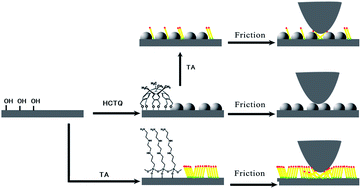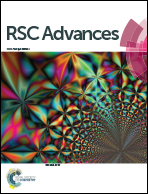Design and evaluation of a mixed monolayer consisting of alkylsilane and novel crown-type molecules
Abstract
A mixed film composed of crown-type molecule hexachlorotribenzotriquinacene (HCTQ) and 3-[2-(2-aminoethylamino)ethylamino]propyl-trimethoxysilane (TA), together with their single-component films, were formed on hydroxylated silicon substrates by self-assembly. The formation and surface properties of the films were characterized by means of ellipsometry, contact angle measurement, attenuated total reflectance Fourier transform infrared (ATR-FTIR) spectrometry, multi-functional X-ray photoelectron spectra (XPS), and atomic force microscopy (AFM). The nano- and micro-tribological behavior of the films was evaluated by AFM and ball-on-plate tribometer, respectively. The results show that the mixed film exhibits enhanced nano- and micro-tribological properties as compared to the single-component films. This is attributed to the synergic effect between the load-carrying capacity of the crown-type molecule and the friction-reducing contribution of the straight chain molecule. The multiple functional groups and rigid aromatic backbone in the crown-type molecule enhance the stability and the anti-wear property of the mixed film, while the flexible alkylsilane serves as lubricant for reducing the friction. In addition, the two-step assembly of the crown-type molecule and alkylsilane can form more densely packed and ordered mixed film, which is beneficial to improving the durability and anti-wear property.


 Please wait while we load your content...
Please wait while we load your content...